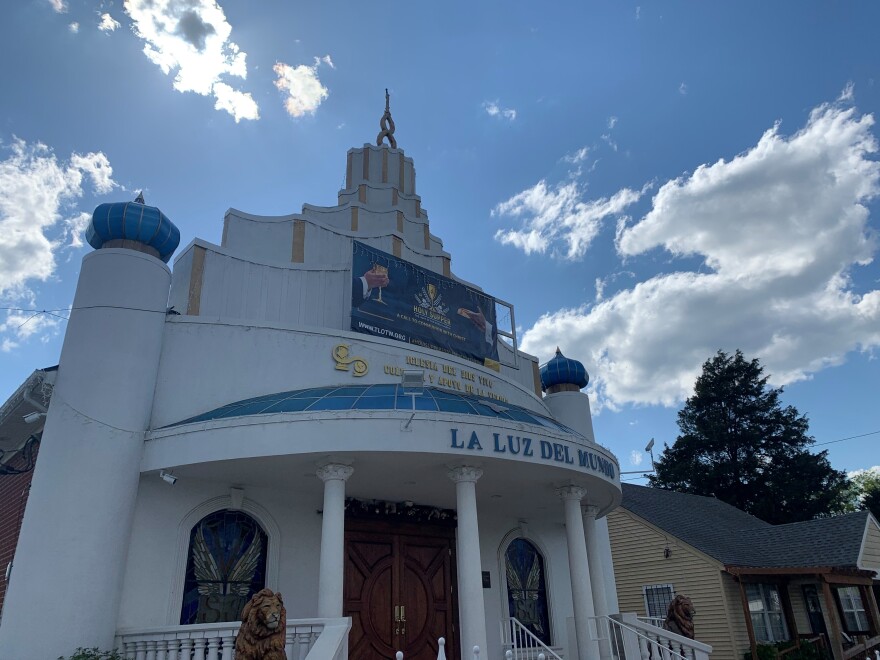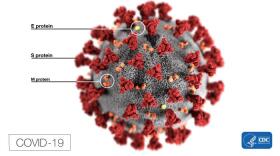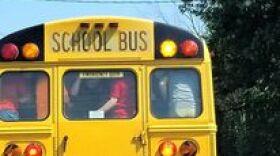Vaccinated or not, the masks come off June 11. Kentucky’s mask mandate will be officially lifted that day, with a few exceptions. As that date nears, the state is making a concerted effort to boost the number of residents protected against COVID-19.
While more than half of Kentucky’s adult population is vaccinated, the state lags in the number of minorities rolling up their sleeves.
It wasn't Sunday and it wasn't a potluck, but 19-year-old Rachel Rodriguez was recently at the fellowship hall of her church on a weekday afternoon. She was there to get the coronavirus vaccine.
"I want to get it over with. I’m stoked honestly. I heard it doesn’t hurt," she said while laughing.
Rachel was at La Luz Del Mundo or Light of the World Church, a congregation of Hispanics in Bowling Green. The church was hosting a pop-up vaccination clinic.

Rachel was born in the U.S. after her parents immigrated from Mexico. Her family represents one of the groups most likely to contract COVID-19, and one of the least likely to get vaccinated.
"Some think it’s not worth getting the vaccine because they don’t want to get sick from it, but they have to think about their family first, and then themselves, as well," Rodriguez said.
Rachel works at T.J. Maxx, and as a retail employee, she comes into contact often with members of the public. She also shares a home with her parents and four siblings. She knows her odds of being infected are high, and she could easily spread the virus. So, she gleefully headed over to the nurse’s station to roll up her sleeve.
Cindy Rodriguez, no relation to Rachel, is a nurse for the Barren River District Health Department, which sponsored the clinic and provided the vaccine. She goes over some information with Rachel before giving the injection.
"This is your COVID vaccine card. You just bring it to your next vaccine appointment," explained. Rodriguez. "Just keep it in a safe place in case you travel, or go anywhere that requires proof of the vaccine."
"Which arm would you like?," asked Rodriguez
"My left one," answered Rachel.
Rachel doesn’t mind needles and watched as she was injected with the Moderna vaccine. She said it was just like getting the flu shot.
"It was good," she responded. "I’m glad it’s finally over with, but I have to wait for the second dosage.”

Rachel headed over to a waiting area where those who have received the vaccine hang out for 15 minutes in case they develop an adverse reaction. That’s where Rodrigo Alonso was speaking in Spanish, sharing his vaccine experience with another Hispanic man. Unlike many in his community, Rodrigo didn’t need much convincing to get immunized.
"I was actually positive with COVID-19 back in June. It was just minor symptoms, but me, my wife, and older daughter, we all three had COVID-19," Alonso explained. "I only had headache, fever, cough, body aches. That was it, but I don’t want it again.”
Rodrigo is a maintenance worker for Old Stone, an upscale living community in Warren County. His health is his wealth. With a family to support, he said taking the vaccine was a no-brainer.
But convincing more Hispanics and other minorities remains a challenge. Black residents, for instance, make up just over eight percent of Kentucky’s population, but account for just over five percent of those vaccinated. The disparity among Hispanics is even greater.
Angel Parker, a health educator for the Barren River District Health Department, said people of color have suffered higher rates of infection and death from COVID-19.
"It has nothing to do with biological or genetic factors," Parker explained. "It’s just along the lines of underlying health conditions, living in dense populations, living in multi-family homes. All are contributing factors.”
Angel is working her fifth pop-up clinic. The health department has held others in Barren, Simpson, and Logan counties. Increasing access to the vaccine for under-served populations is key to getting Kentucky closer to herd immunity.
"They deserve the opportunity to have it just like anybody else does," Parker said. "So I’m grateful we’re able to come into these communities, to partner with churches, and take care of everybody.”
All 150 doses allotted for this pop-up clinic were used, suggesting that with education and accessibility, vulnerable groups are willing to be vaccinated. As the end of the pandemic nears, opportunities like these mobile clinics are becoming fewer, despite evidence showing access improves outcomes.
Barren River District Health Department Director Matt Hunt said there are no plans to hold anymore pop-up clinics in its eight-county service area of south central Kentucky. Vaccinations are only being given now at the the health departments those counties.








